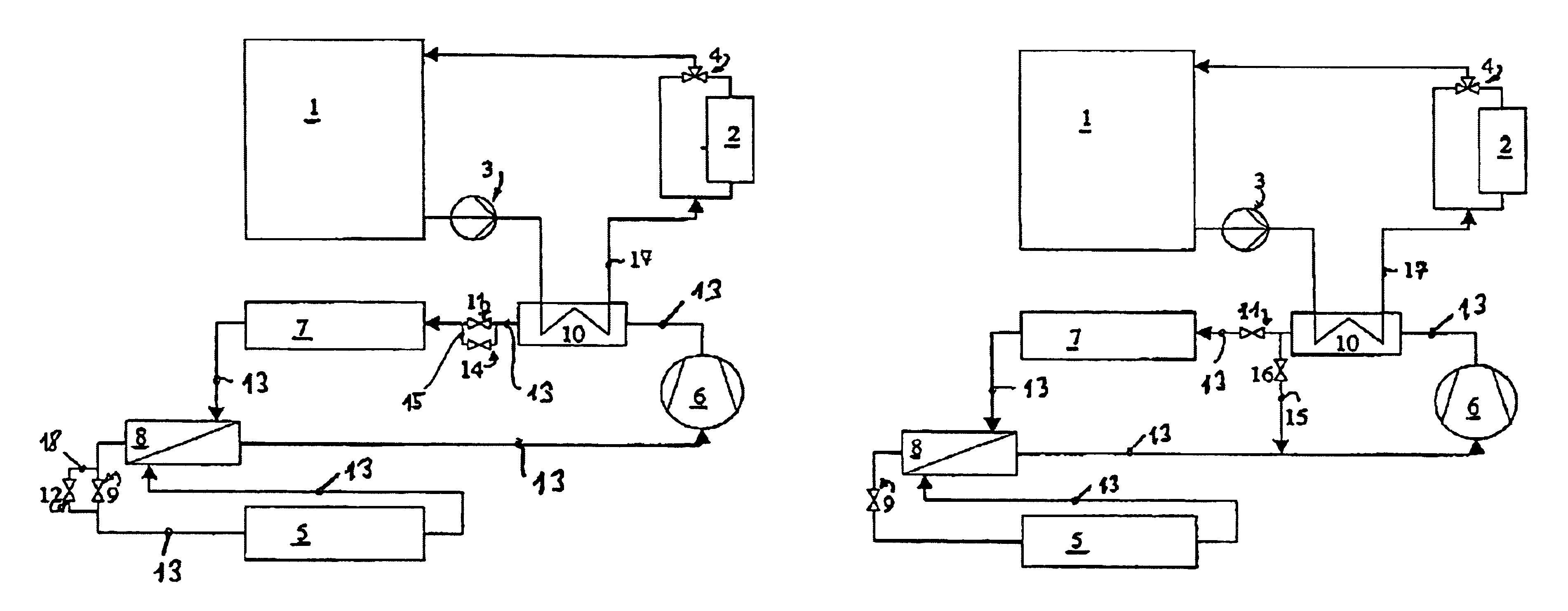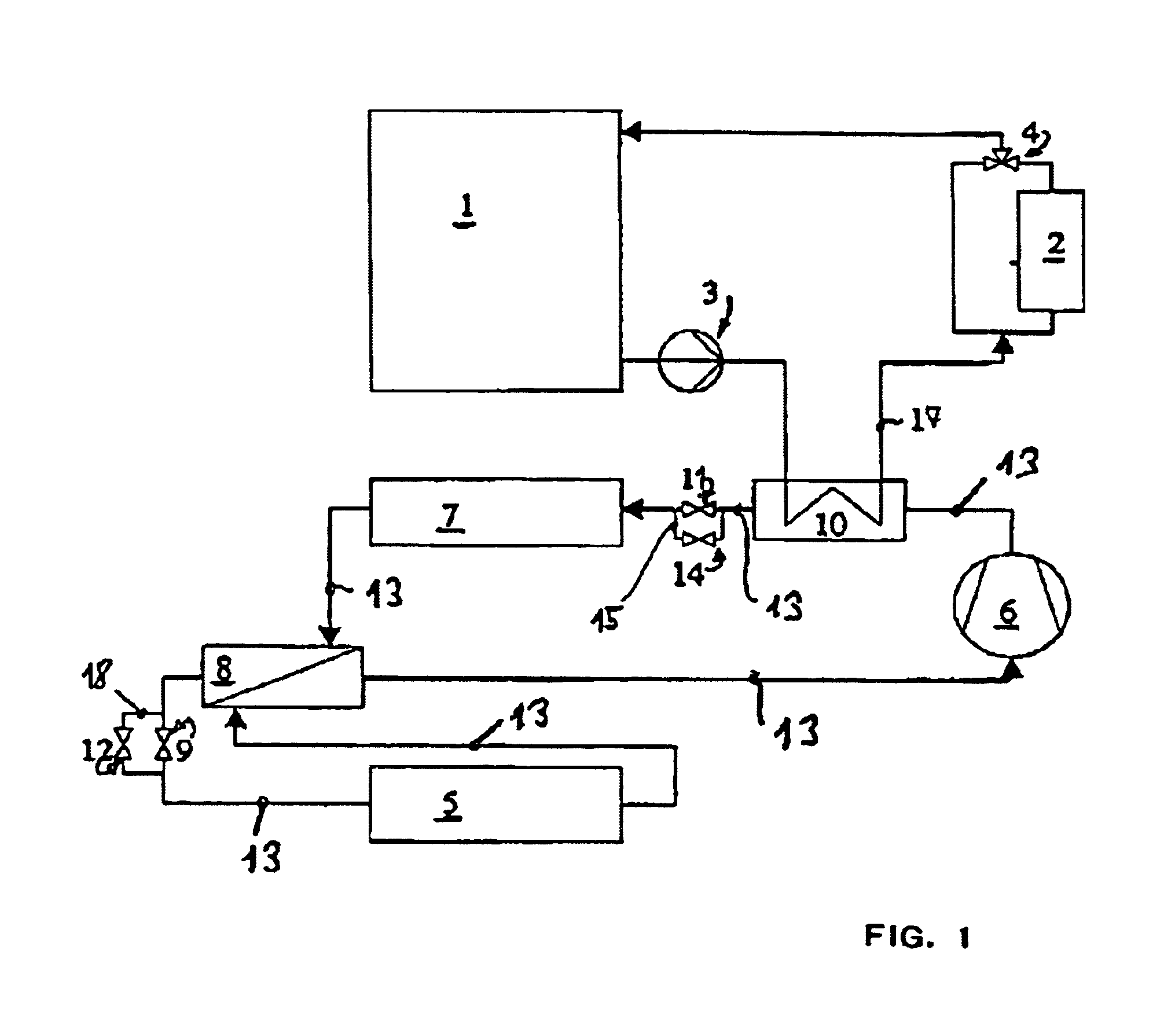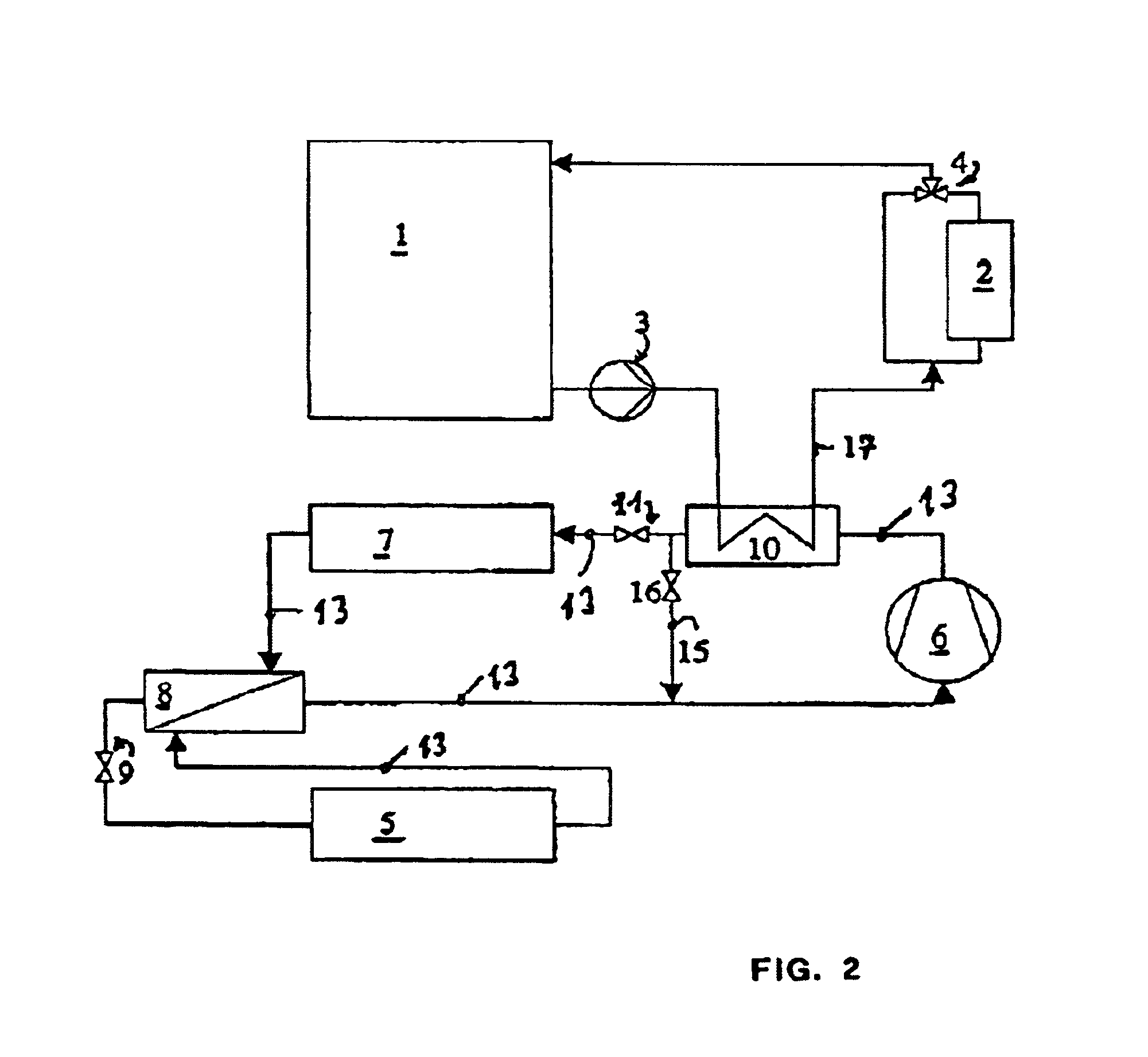Vehicle conditioning system
a technology for air conditioning systems and vehicles, which is applied to compression machines with several condensers, heating types, lighting and heating apparatuses, etc., can solve the problems of insufficient heat produced by the engine in winter, unsatisfactory heat output, and unsuitability for operation, so as to improve the air quality and improve the air quality. , the effect of improving the air quality
- Summary
- Abstract
- Description
- Claims
- Application Information
AI Technical Summary
Benefits of technology
Problems solved by technology
Method used
Image
Examples
Embodiment Construction
[0013]The air-conditioning system according to FIG. 1 has been modified with respect to that according to the state of the art, as shown in FIG. 7, in such a way as to enable a heating function of the air conditioner, which in this case operates as a heat pump. For this purpose, an auxiliary heat exchanger 10 is provided, which is incorporated into the cycle in order to extract heat from the gaseous refrigerant and to transfer the heat to the water that circulates to cool the engine. The circulation of the cooling water is indicated by the reference numeral 17. In the auxiliary heat exchanger 10, therefore, heat exchange occurs between the gaseous refrigerant cycle and the cooling-water cycle on the engine side. The refrigerant gas, namely CO2, has been heated to a high temperature and is delivered from a compressor 6 positioned upstream of the heat exchanger 10. Downstream of the auxiliary heat exchanger 10 is disposed an expansion valve 14, by means of which the pressure of the re...
PUM
 Login to View More
Login to View More Abstract
Description
Claims
Application Information
 Login to View More
Login to View More - R&D
- Intellectual Property
- Life Sciences
- Materials
- Tech Scout
- Unparalleled Data Quality
- Higher Quality Content
- 60% Fewer Hallucinations
Browse by: Latest US Patents, China's latest patents, Technical Efficacy Thesaurus, Application Domain, Technology Topic, Popular Technical Reports.
© 2025 PatSnap. All rights reserved.Legal|Privacy policy|Modern Slavery Act Transparency Statement|Sitemap|About US| Contact US: help@patsnap.com



